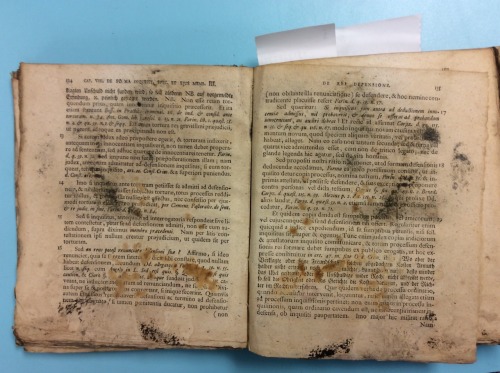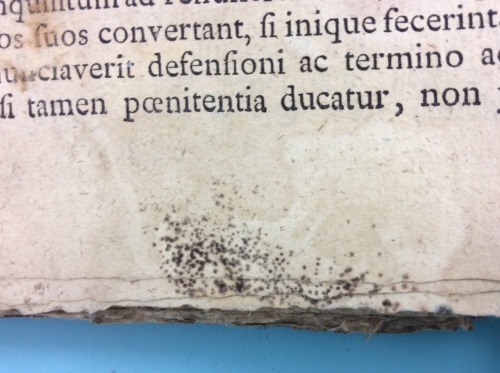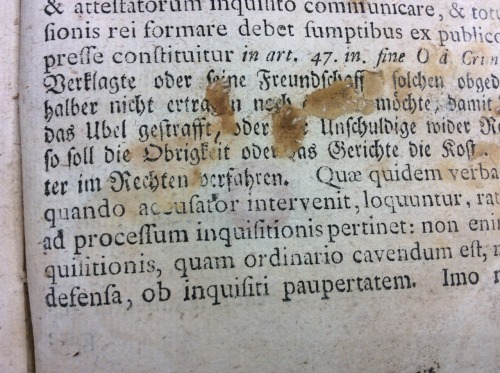msulconservationlab:This poor book was full of mold, dirt, and accretions. (I urge you to click on
msulconservationlab: This poor book was full of mold, dirt, and accretions. (I urge you to click on the first image so that you can see a larger version). The mold was inactive when it came down to the lab, but the dark, black, fuzzy stuff still made me shudder. I vacuumed the entire book - page by page - in the fume hood, using a vacuum with a HEPA filter, and wearing personal protective clothing. It took about 3 hours to vacuum the entire book. Even inactive mold can produce allergic symptoms in sensitive individuals, and we wouldn’t want our patrons to become sick while using our collections! Although the mold spores have been removed, some staining remains. Additional conservation is needed to make this book usable, since the sewing is broken, the pages are loose, and the binding is badly distorted. Just another item for my “to do” list! -Bexx Yuck! These are the kinds of copy-specific features we don’t want to preserve for posterity. The staining, at least, tells a story—but the presence of the mold itself (active or inactive) is obviously a serious health risk.For more on moldy books and what to do with them, check out these other fantastic posts from our Library’s Wallace Conservation Lab Tumblr: Mold, certain adhesives, and some pigments fluoresce under UV lightMold from a July 4th, 2015 water leak (extra disgusting)Purple paper staining the result of extensive mold damageVacuuming moldy books in the conservation lab (gif)A big thank you to all the conservators out there for the work you do—behind the scenes—keeping patrons and staff safe and ensuring our library books are usable for generations to come!~Andrew -- source link
Tumblr Blog : msulconservationlab.tumblr.com
#book conservation#preservation#msulibraries#thank you#reblog





